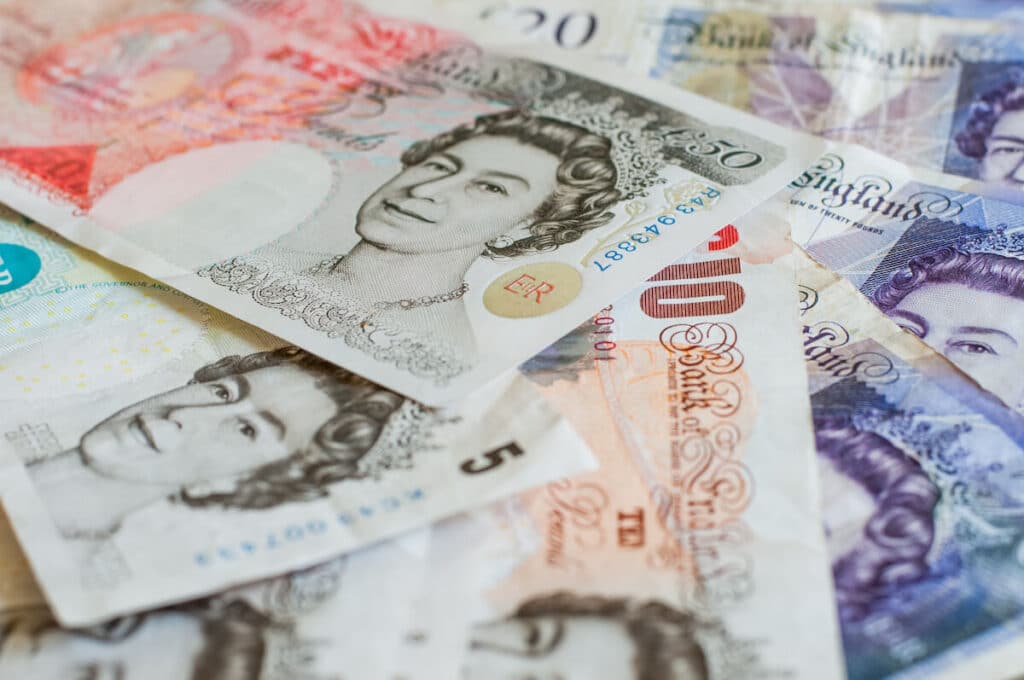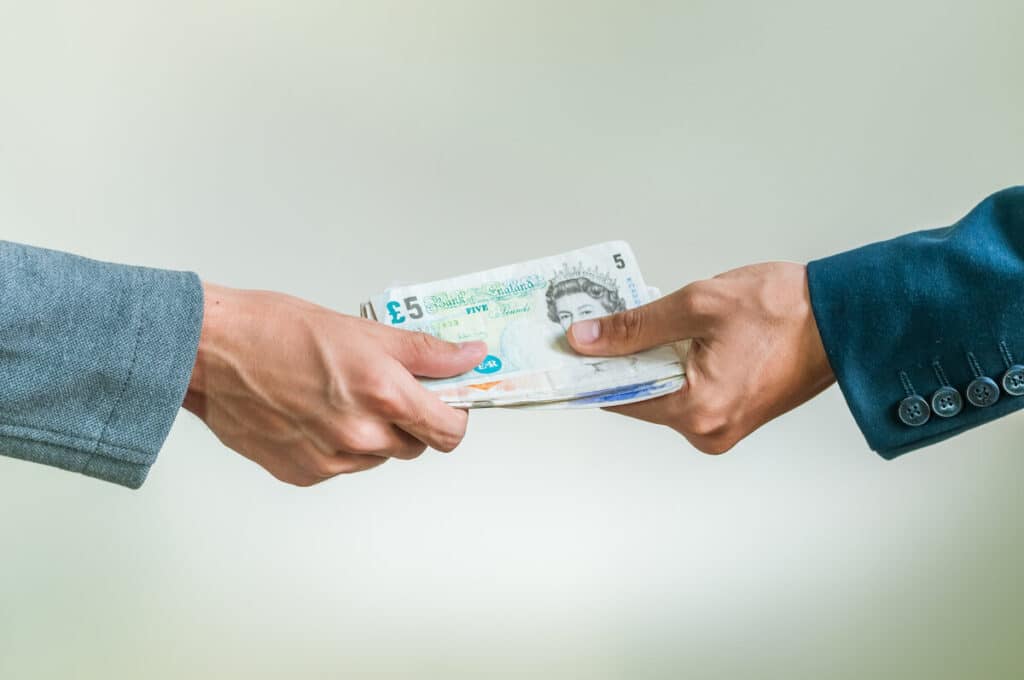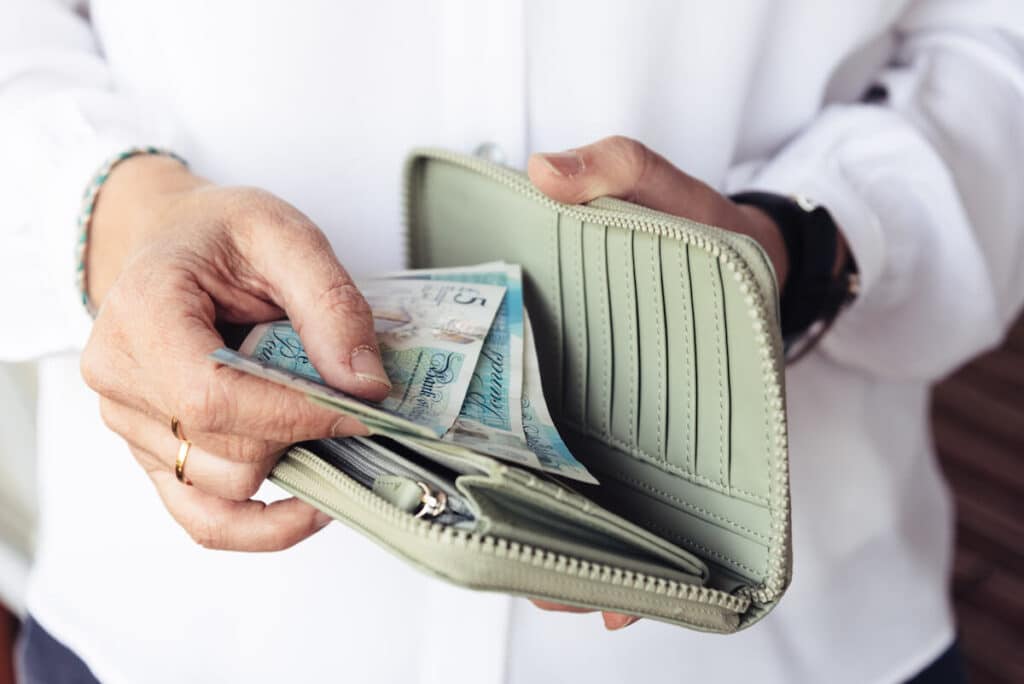
Known for its fish and chips, long-reigning monarchy, and classic literature, the United Kingdom is a small but mighty island country in Europe. The United Kingdom’s long and storied history is reflected in its national currency, the British pound. In fact, the GBP is the oldest world currency still in use.
Today, the British pound is one of the strongest and best known currencies in the world. Whether you plan to visit or settle in the U.K. as an immigrant, check out this guide to become familiar with the United Kingdom’s currency.
What is the United Kingdom’s currency?
The official currency of the United Kingdom is the British pound (GBP). Also called “British pound sterling,” it’s represented by the £ symbol. Several countries and territories use the British pound as legal tender, such as:
- The United Kingdom, which includes Wales, England, Northern Ireland, and Scotland;
- South Georgia; and
- South Sandwich Islands.
Other global currencies tie their exchange rate to the British pound, including those of:
- Gibraltar;
- Isle of Man;
- Jersey; and
- Guernsey.
The Bank of England issues the United Kingdom’s currency in banknote denominations of 5, 10, 20, and 50 pounds.
The Bank of England also issues coins in 1, 2, 5, 10, 20, and 50 pence. Similar to the U.S. dollar, one British pound is comprised of 100 pence.
British pound exchange rates
Please check the Remitly website for the most current exchange rate for British pound to Japanese yen, Colombian pesos, and other currencies.
The colorful history of the United Kingdom’s currency

The British pound has its origins in the Roman Empire, which stretched across much of Europe and the British Isles.
We know the pound was the United Kingdom’s currency as far back as the year 775 CE, when one GBP was equivalent to one pound of silver coins.
However, it wasn’t until the first king of England, Athelstan, came to power in 928 that the British pound officially became the currency of the United Kingdom. According to historical records, one pound could buy 15 cows during this time — an impressive amount of wealth.
In 1694, King William III established the Bank of England as a way to finance his continued war with France. For hundreds of years since, the Bank of England has continued to manage the British pound.
Although the British pound started out as a silver-backed currency, in 1717, it was moved to the gold standard. Sir Isaac Newton made the change as the Master of the Mint — and the country would follow the gold standard for the next 200 years.
However, in 1914, the U.K. stopped following the gold standard because of World War I. Winston Churchill brought the British pound back to the gold standard in 1925, but the country once again dropped it in 1931.
In 1971, the U.K. allowed the value of the British pound to float. This means that, instead of pegging its value to gold or other currencies like USD, the government allows the market to decide the value of the United Kingdom’s currency.
Today, the British pound is the fourth most-traded currency in the world.
7 fun facts about the British pound

Thanks to its long history, there are plenty of interesting facts about the British pound. Check out these seven fun facts to expand your knowledge of the United Kingdom’s currency.
1. The Romans invented the British pound.
The currency has been used in some form for over 1,200 years and has its origins in the Roman Empire, which had a strong presence in the U.K.
The British pound’s name originally came from the Latin word “libra,” which means weight or balance. This makes sense because, back in Roman times, a pound of silver was the unit of measurement for money.
In fact, the pound was equivalent to the value of one pound of silver. This is why it’s also called “pound sterling” because it used to be worth one pound of silver.
2. British currency is among the oldest in the world.
Although it has its origins in the 700s, the first British pound note was created by the Bank of England over 300 years ago, in 1694.
These notes were originally handwritten, with printed notes appearing between 1696 and 1699.
3. The Bank of England reverses the face of each monarch on its coins.
Queen Elizabeth II was the longest-reigning monarch in the U.K.’s history. She took the throne in 1952 and reigned until her passing in 2022. Because of her long tenure, many people don’t realize that the Bank of England has policies in place every time there’s a new ruler.
When a new monarch takes the crown, the Bank of England reverses the way the monarch faces on the coin. Queen Elizabeth’s nose is turned to the right on U.K. coins. If and when King Charles III is added to the British pound, he will face the opposite way, with his nose toward the left.
4. Pence are weighed cleverly.
Did you know that two one-pence coins weigh the same as a single two-pence coin? The same holds true for the rest of the British pound’s pence. This is a clever nod to the pound’s origins as a weight-centered currency. It’s also an effective anti-counterfeiting measure.
5. British pounds are made of polymer, not paper.
Paper money will easily deteriorate over time, which is why the British pound is made of a polymer mix. This not only makes the bill harder to counterfeit, but also increases its life span.
6. British pounds are often counterfeited.
The pound has a big counterfeiting problem. In fact, it’s one of the most counterfeited currencies in the world. The U.K. government estimates that at least 2.5% of its pound coins are counterfeit.
7. When it was in the EU, the U.K. continued to use pounds.
Most of the nations in the European Union (EU) use the euro, a unified currency created in 2002. But even when Great Britain was in the EU, it opted to continue using British pounds instead.
In 2016, the U.K.’s citizens voted to leave the EU. The pound‘s value dipped to a 31-year low in response, and the U.K.’s financial systems experienced significant disruption.
How to exchange British pounds

Visitors to the U.K. can exchange their money for British pounds at ATMs, airport exchanges, or local banks.
If you live in the U.K. and wish to send money abroad, you can use a trusted money transfer app like Remitly.
